What is the Best Camera for Travel Photography?
If you are considering which camera to buy for your travels, you’ve come to the right place! Not only will we explore what’s important in a camera but also the features and benefits within each of the top rated cameras in all 3 categories. As an avid travel photographer, I decided to tackle this one with some passion, experience and a love of photography itself…
And trust me, with my love of photography as well as all my years traveling, I’ve spent time muddling through all these different cameras and I want to pass along all the pros and cons of each to consider before you purchase. I only wish someone had done the same for me! And truth be told, no one traveler will have the same needs when it comes to picking the best camera to travel with.
So by the end of this article, you’ll have a very clear picture of what is most important to you in terms of a camera and what you need out of it. We will cover which cameras are top rated in each price category as well as how they rank amongst their competition, plain and simple. By the end, you’ll feel refreshed and confident in knowing what’s important, what to look for and will be able to identify the best camera choice for you and your travels.
Click Here to Jump to the Top Rated Compact Cameras
Click Here to Jump to the Top Rated DSLR Cameras
Click Here to Jump to the Top Rated Micro 4/3 Cameras
The Main Three Camera Types we’ll be covering include:
Compact, DSLR and Micro 4/3 (Mirrorless) Cameras
I’ll be covering each in detail to help you make the most educated and informed choice. Now, before we jump in, lets not get misled thinking there is one ‘best’ camera! The fact is, each and every camera has its pros and cons and that includes the price someone is willing to pay. One may be the best for one traveler, but not for the next. That’s OK. And that’s why I wrote this article.
When comparing the four main critical points (image quality, design, performance and features), there isn’t one camera that hands down beats all the rest…
Every one us has different wants and needs when it comes to picking out best camera for travel. We take different trips for different reasons, choose different locations, carry different sized packs, and prefer to shoot different things. There will be a lot of variance between camera equipment for those that just want to capture unique people they meet on their travels and all the moments in between instead of the diehard travel photographer looking to capture a panoramic view of the northern lights on a starry night in the middle of Iceland.
And in case anyone should think I’m biased in all this, I’ve been a fan and user of all the three types of cameras since starting my travels, both compact, DSLR and Micro 4/3 and today, I always carry at least two with me at all times!
Alright then, let’s get started on defining what’s important and how to differentiate.…
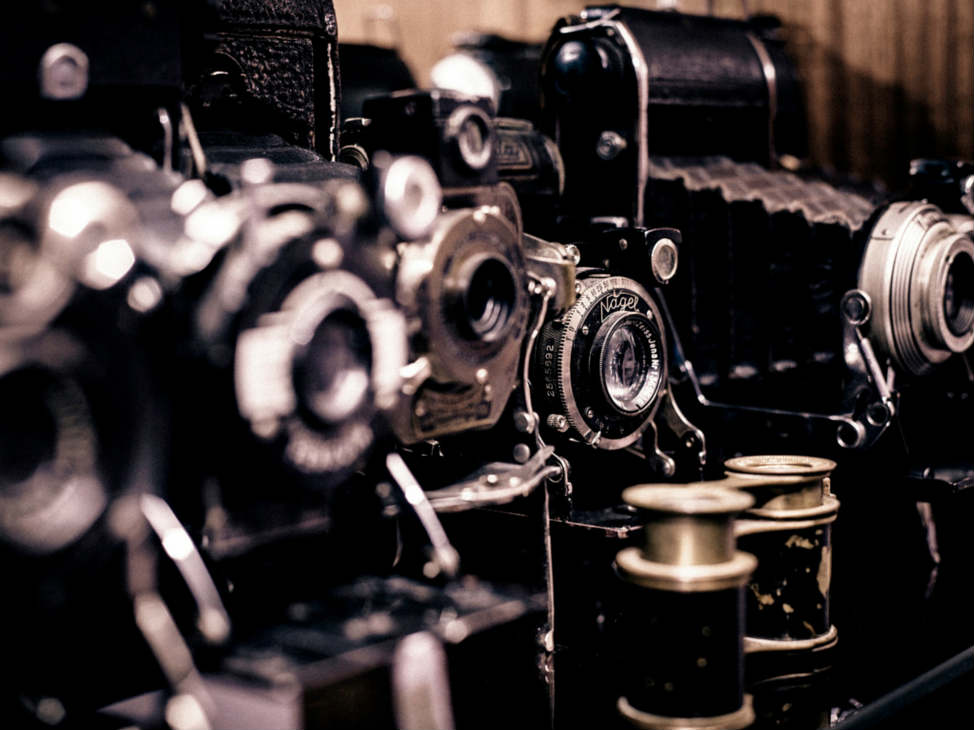
Most Important Camera Attributes for Travelers to Consider:
SIZE – Will the camera fit well into my bag? Will it fit in my pocket? Is it bothersome to carry around for 8 hours while on a trek, tour or walk through the city?
WEIGHT – Will it weigh down my backpack? Will it help or hinder the allowable weight on the plane in my checked luggage? Is it a bear to carry around my neck all day?
BATTERY LIFE – Will it last all day when I’m out on a tour? Could it make it a full day and night or longer if I’m out on a safari or camping trip? If not, how many batteries am I then going to have to buy to take extra?
MEGA PIXEL – How good is the image quality when I crop my photos? Can I enlarge them when I get home to poster size?
SENSOR SIZE – While mega pixels do matter, true image quality boils down to sensor size, so will this be adequate for my needs? How does it stack up to other camera options? It the sensor rated well in its class?
ZOOM – How far can I zoom in while still being able to take a quality photo? As we know that ‘digital zoom’ is just a simulation of optical zoom and not important, how strong is the optical zoom on the camera I’m thinking to buy?
PANORAMA SHOTS – Does it take those all important panorama shots?
LOW LIGHT – How does the camera do in low light situations, especially at night when it’s best not to use flash?
WIFI AND GPS – Can it upload my photos right to the internet so I can share them on my computer or smartphone? Will it track my photo locations where I’ve taken them?
COST – What does this camera cost? Is it in my budget? Is it worth upgrading to a better camera to be able to get more features and benefits?
COOL FEATURES – What is it that separates this camera from the rest in its class? Why would I want to buy it? What are its unique features and benefits?
Now, looking through these all important camera criteria and attributes, which are most important to you? Which factors will be most important to your trip? To your photographic needs? Ask yourself these questions because just realize that no camera will be the best of all worlds BUT once you identify what in fact is important to you, you WILL find that one camera that suits you BEST!
Here’s a Quick Section on Camera Jargon Defined:
AF – Stands for Autofocus and essentially has the ability of your camera to intelligently adjust the focus for you which can dramatically help in making your photos crisp and clear in terms of image quality.
Aperture – It is the variable of ‘opening’ in the lens which light passes through to the sensor and is measured in ‘f-stops’ (like f 1.8, 2.4, 4.0, etc). Think of it like the pupil of your eye. Your pupil opens and closes variably based on the amount of light outside or inside a room.
DSLR – Stands for Digital Single Lens Reflex camera.
FPS – Stands for Frame Per Second and simply means how many images a camera is able to capture continuously at any given time. So if you wanted to shoot someone kicking a ball, frame by frame, you would want as high an FPS number as possible.
HDR – Stand for High Dynamic Range; and is the type of shooting that enables you to create a photo with a greater dynamic range than is normally possible. It allows you to take high-contrast scenes but also keeping shadow and highlighting details.
ISO – Stands for International Standards Organization (yeah, didn’t think that was the acronym, did you?). Basically, it measures how sensitive your camera digital sensor is to light. Therefore, the higher the ISO number, the more it will allow you to shoot in low light environments.
Megapixels – These are probably the most commonly compared feature of cameras. A megapixel is simply one million pixels and is basically used to rate the amount of resolution for a digital camera. The higher the number, the more detail it is said to have in terms of image quality. However, the type of sensor and sensor size also plays an important role.
Remote Trigger – Also known as a ‘Remote Camera’ feature, this allows you to wirelessly control your camera in taking a photo whether it be from an app on your smartphone or something similar. Not only is the handy when you have no one around to take the photo holding the camera but is also great because it eliminates any movement of the camera when taking a photo which is especially helpful in long exposures.
Got it figured out now? Superb! Let’s jump in and get rockin….
Best Camera for Travel Photography:
Pros & Cons of a Compact / Point & Shoot Camera
When it comes to traveling, compact cameras seem to be a camera of choice for most travelers. Why? Because they are very affordable and can often fit right into your pocket. They can also take some amazing photos and many even have great low light ability for evening shots.
The main problem though for anyone considering one is the multitude of options out there in the compact camera world. There are way too many options… But the information below will help you out. Let’s first look at all the advantages of having one when traveling…
Pros of a Compact / Point & Shoot:
This is the type of camera I started my travels with. As you all know, when you start out pre-packing for your trip, the size and weight of your backpack or luggage is of crucial concern. So that being a factor, I thought that having an extremely small and lightweight camera would do well alongside me. I wanted it to have a great optical zoom of course and a long battery life but I also wanted something that would fit in my pocket (including jeans)!
A compact camera gives you all of these benefits. Plus, with the advanced technology that is continually coming out, the lenses and sensors of compact cameras is continually improving every year. This way you can get high quality pictures in an extremely small device thus saving plenty of room in your pack. And of course the other advantage is being able to keep it on you at all times such as in your pocket or purse. That way you are more apt to take it out, even on nights and you are less apt to never miss a shot fumbling for lenses or lens covers as you would with a larger camera.
Another plus is the fact that it is less likely to get stolen. Namely because you can easily keep it hidden and on you instead of carrying around a much larger, more expensive camera that has a brand name that the world’s thieves may recognize. In most countries this won’t matter but it is something to consider while traveling in others. To me, these are the biggest advantages of having a compact camera and most would agree.
Cons of a Compact / Point & Shoot:
On the flip side, the main reason a lot of travelers don’t opt for the compact camera is its limiting ability to capture certain types of photos and to have peak photo quality. In short, the mere fact there is an inability to change lenses will be a deciding factor for many travel photography enthusiasts. For the professional photographers out there, many of which travel quite frequently, you need to have interchangeable lenses. Without them, you will find yourself limited in what you are able to shoot both professionally and creatively. If this bothers you, then you need to consider whether a compact is the right choice for you. Sometimes, as in my case, you may decide to take both a compact and a professional camera.
So how do you rate the best cameras for travel photography in the compact/point and shoot line up? Here are the top three cameras as rated in each price category, from under $250 up to $800 USD.
Best Camera for Travel Photography:
Top 3 Compact/Point & Shoot Camera – Under $250
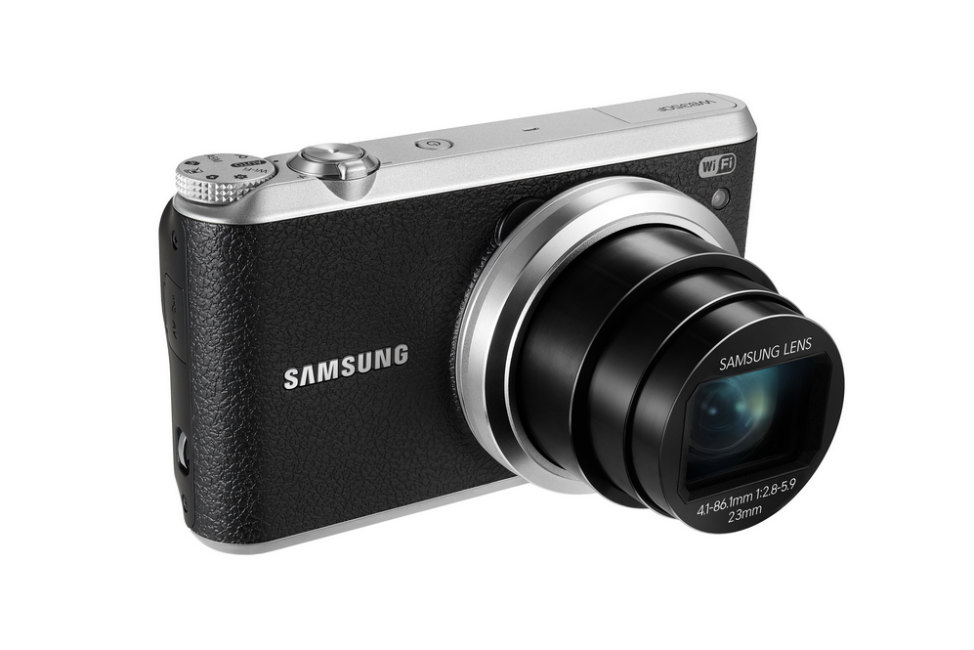
Samsung WB350F – Best Camera for Travel Photography – Compact Under $250
1. Samsung WB350F
SENSOR SIZE/MEGAPIXELS – 16.3 Megapixels
BATTERY LIFE – Approx. 310 shots
ZOOM – 21x optical zoom
PANORAMA SHOTS – not specified
LOW LIGHT – Uses a (BSI) CMOS sensor that doesn’t require much light for proper exposure
WEIGHT – .61 lbs / 9.76 oz
SIZE – 2.56 x 0.98 x 4.49 in.
WIFI – Yes
COST – Around $220
COOL FEATURES – Wide angle shots, 21x optical zoom, use your phone as a ‘viewfinder’ to take photos remotely, easily transfers photos to your smartphone
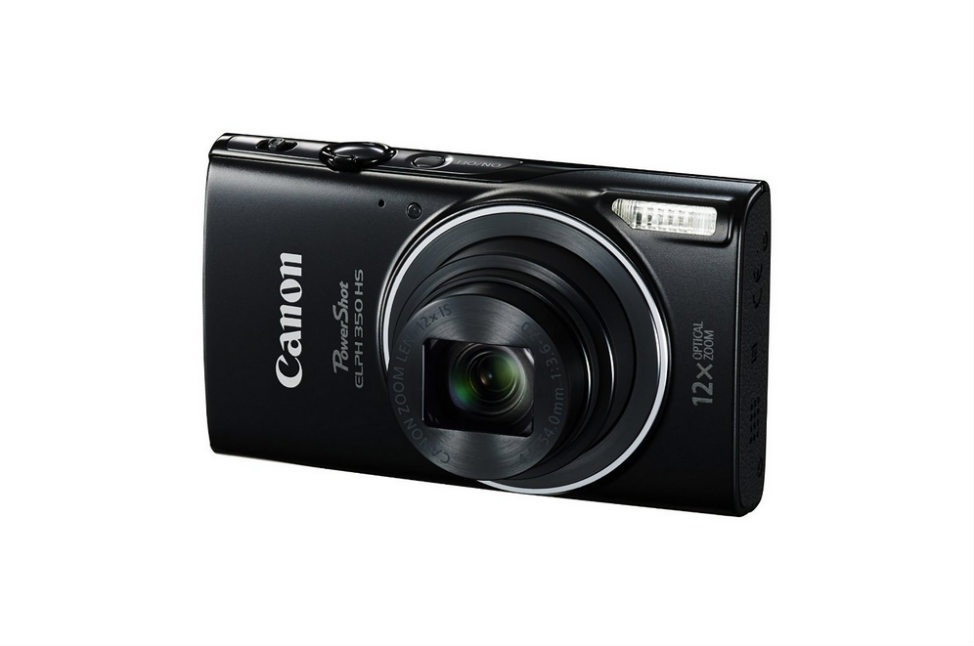
Canon Powershot 340HS – Best Camera for Travel Photography – Compact Under $250
2. Canon Powershot 340HS
SENSOR SIZE/MEGAPIXELS – 16 Megapixels
BATTERY LIFE – Approx 190 shots
ZOOM – 12x optical zoom
PANORAMA SHOTS – Not specified
LOW LIGHT – Rated well with their High-Sensitivity CMOS sensor
WEIGHT – .32 lbs / 5.19 oz
SIZE – 3.93 x 2.27 x 0.88 in. / 99.7 x 57.6 x 22.4mm
WIFI – Yes
COST – Under $200
COOL FEATURES – 12x optical zoom (something you won’t find with your smartphone), 1080p Full HD video, ‘Smart AUTO’ selects from 32 predefined settings, Great value for the relatively inexpensive cost to purchase, Built in WiFi and remote shooting available with your smartphone, powerful 12x optical zoom, very slim and lightweight for its class
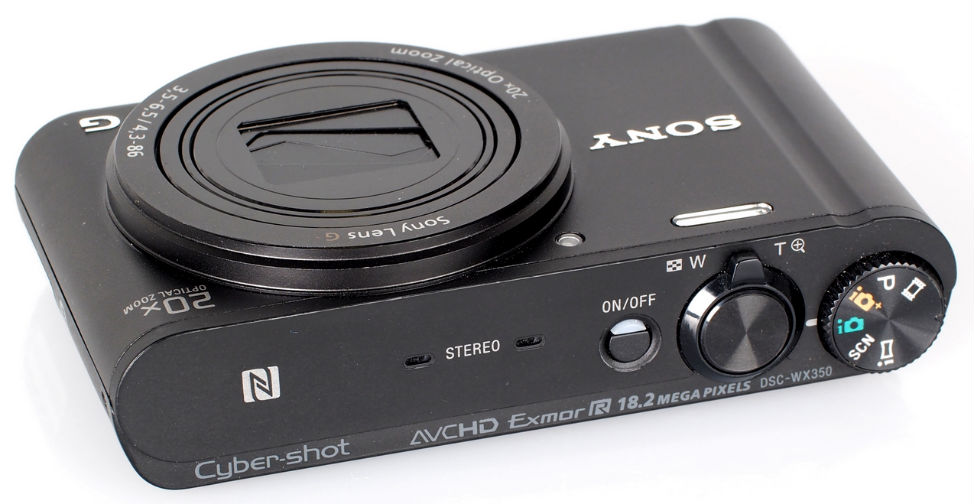
Sony Cybershot WX350 – Best Camera for Travel Photography – Compact Under $250
3. Sony Cybershot WX350
SENSOR SIZE/MEGAPIXELS – 18.2 Megapixels
BATTERY LIFE – Approx. 470 shots
ZOOM – 20x optical zoom
PANORAMA SHOTS – Yes, allows ‘Sweep Panorama’ that takes up to 360 degree shots
LOW LIGHT – Exmor R CMOS image sensor allows superb low light pictures
WEIGHT – .45 lbs / 7.2 oz
SIZE – 2.16 x 1.01 x 3.78 in.
WIFI – Yes
COST – Under $300
COOL FEATURES – Intelligent Auto mode (automatically recognizes scenes, landscapes and faces to choose the best setting), 25mm wide-angle lens, ultra slim and lightweight, 4k image quality, amazing battery life
Best Camera for Travel Photography:
Top 3 Compact / Point and Shoot Camera – Under $500
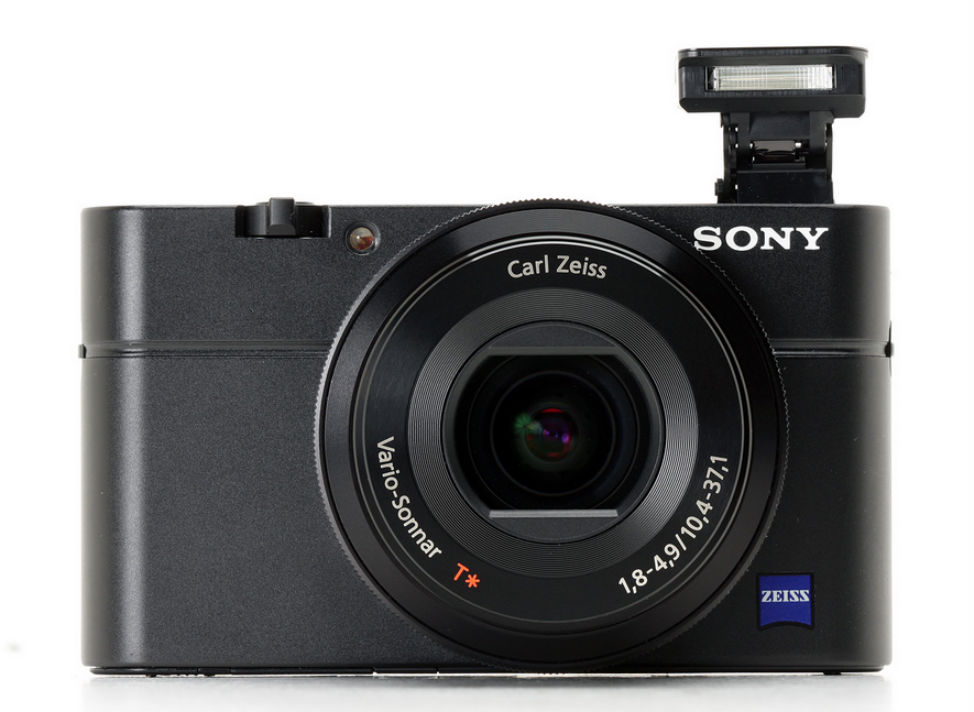
Sony Cybershot DSC-RX100 – Best Camera for Travel Photography – Compact Under $500
1. Sony Cybershot DSC-RX100
SENSOR SIZE/MEGAPIXELS – Large 1″ Exmor™ CMOS sensor / 20.2 Megapixels
BATTERY LIFE – Approx. 330 shots
ZOOM – 3.6x Optical Zoom
PANORAMA SHOTS – Yes, has a ‘sweep panorama’ mode for both horizontal and vertical photos
LOW LIGHT – Low-light ISO 6400 sensitivity with an f/1.8 lens
WEIGHT – .52 lbs / 8.47 oz
SIZE – 4″ x 2.875″ x 1.425 (10.16cm x 7.3 cm x 3.683 cm)
WIFI – No however WiFi is available on the RX100 II and RX100 III models
COST – Around $450
COOL FEATURES – Ability to shoot in RAW modes for high quality, SLR like modes for advanced photographers such as Manual, Program, Aperture Priority, and Shutter Priority, Full HD Video 1080/60p with high rate recording at 60fps, Much larger sensor than the average compact, point and shoot camera

Panasonic Lumix DMC-LX7 – Best Camera for Travel Photography – Compact Under $500
2. Panasonic Lumix DMC-LX7
SENSOR SIZE/MEGAPIXELS – (1/1.7″) 10.1MP MOS sensor, 10.1 Megapixels
BATTERY LIFE – Approx 330 shots
ZOOM – 3.8x optical zoom
PANORAMA SHOTS – Yes, 360 degree capability
LOW LIGHT – Great low light ability, rated one of the best in its class
WEIGHT – .66 lbs / 10.56 oz.
SIZE – 2.68 x 1.81 x 4.37 in /
WIFI – Not specified
COST – Around $330
COOL FEATURES – Above average battery life, very good low light (F1.4 – F2.3), excellent image quality for a compact camera
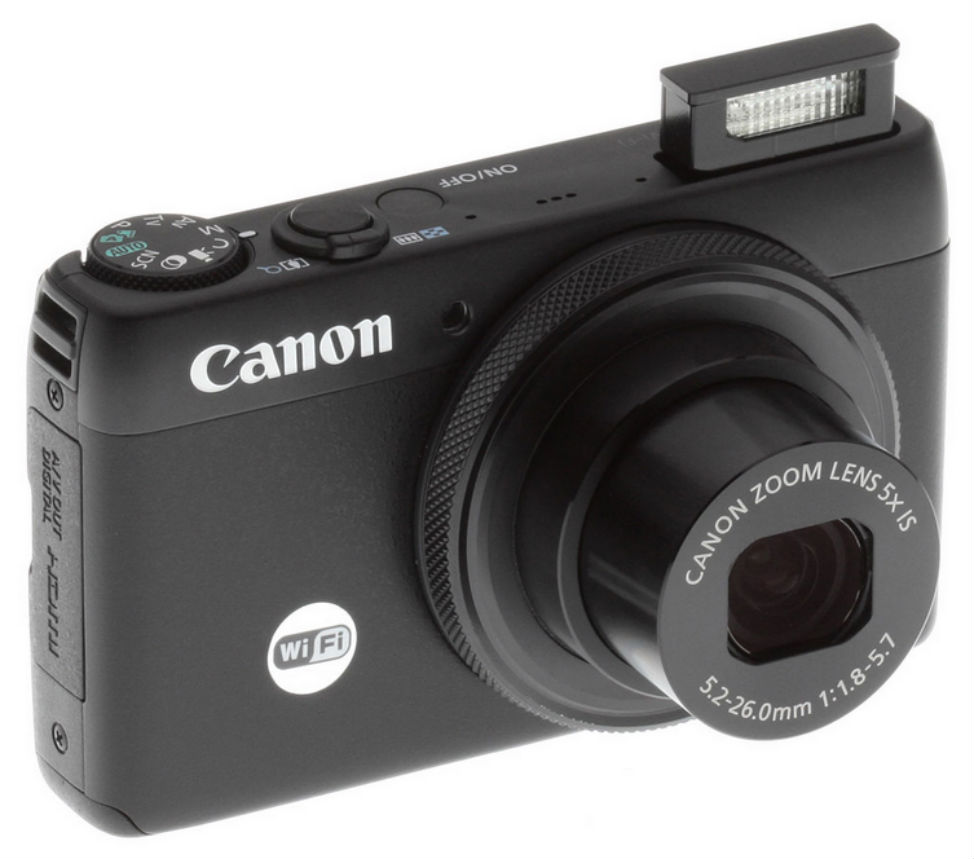
Canon Powershot S120 – Best Camera for Travel Photography – Compact Under $500
3. Canon Powershot S120
SENSOR SIZE – 1/1.7″ CMOS Sensor, 12.1 Megapixels
BATTERY LIFE – Approx 230 shots
ZOOM – 5x Optical Zoom
PANORAMA SHOTS – Not Available
LOW LIGHT – Canon HS System allows higher shutter speeds with an ISO 12800
WEIGHT – .48 lbs / 7.68 oz
SIZE – 3.9 x 1.1 x 2.3 in
WIFI – Yes, built-in WiFi
COST – Around $350
COOL FEATURES – Focal length range from 24mm – 120mm, WiFi allows easy sharing to social media as well as to your tablet, phone or PC, High quality HD Video 1080/60p, Very slim camera in terms of size, Large 3″ LCD touchscreen
Best Camera for Travel Photography:
Top 3 Compact / Point and Shoot Camera – Under $800
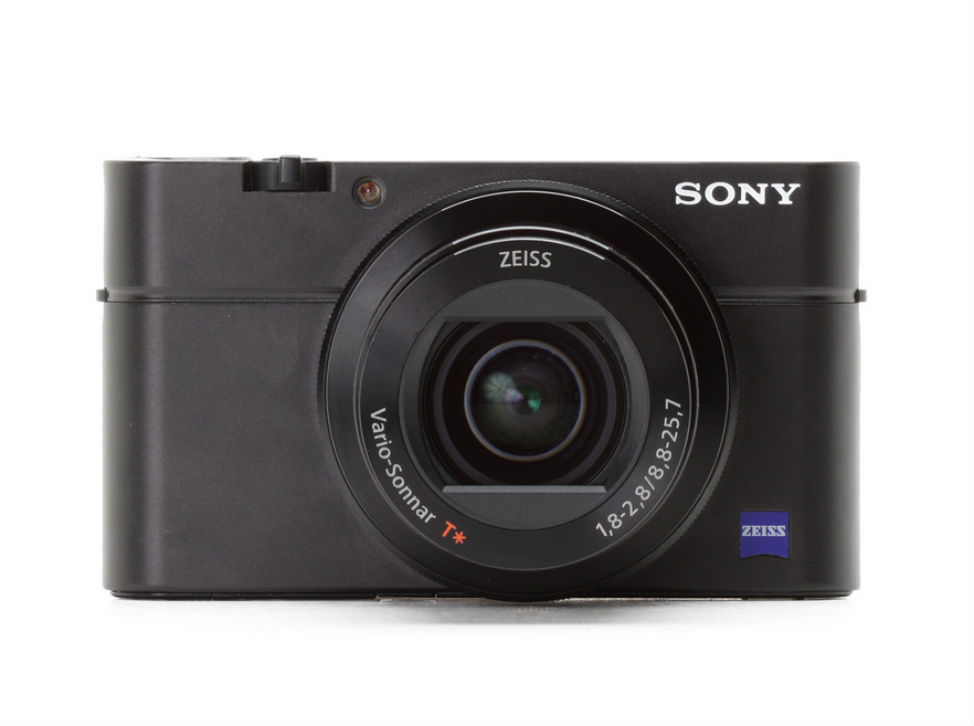
Sony Cybershot DSC-RX100 III – Best Camera for Travel Photography – Compact Under $800
1. Sony Cybershot DSC-RX100 III
SENSOR SIZE/MEGAPIXELS – 1″ Exmor R BSI CMOS Sensor, 20.1 Megapixels
BATTERY LIFE – Approx 320 Shots
ZOOM – 2.9x Optical Zoom
PANORAMA SHOTS – Yes, has ‘Sweep Panorama’ mode for vertical and horizontal photos
LOW LIGHT – Good but not rated as well as other camera in its class for performance – f/1.8-2.8
WEIGHT – .64 lbs / 10.2 oz
SIZE – 2.28 x 1.61 x 4.02 in / 102 x 58 x 41 mm
WIFI – Yes, Built-In Wi-Fi Connectivity with NFC
COST – Just Under $800
COOL FEATURES – Many of the great features of the DSC-RX100 plus upgrades such as a 3″ tilting LCD (180/45 degree tilt), has an optional 1440k pop up electronic view finder, built-in WiFi connectivity with NFC, larger 1″ sensor is best in its class, excellent video with 1080/60p and full control capability
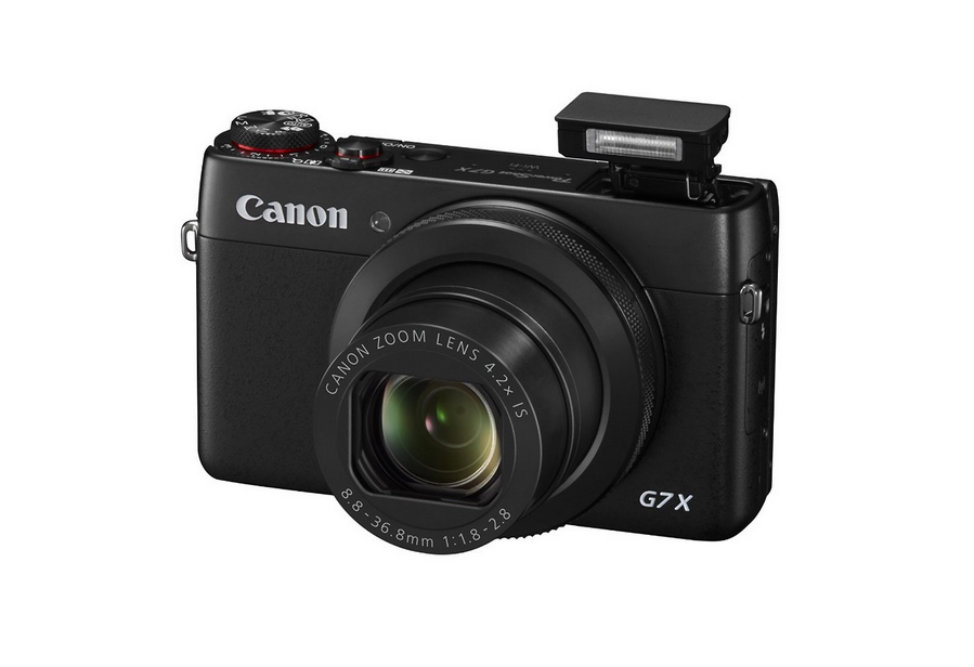
Canon Powershot G7X – Best Camera for Travel Photography – Compact Under $800
2. Canon Powershot G7X
SENSOR SIZE/MEGAPIXELS – Large 1″ High-Sensitivity CMOS sensor / 20.2 Megapixels
BATTERY LIFE – Approx 210 Shots (has an ‘ECO Mode’ for 310 shot capability)
ZOOM – 4.2x Optical Zoom
PANORAMA SHOTS – Not Specified
LOW LIGHT – Excellent low-light photography up to ISO 12800
WEIGHT – .67 lbs / 10.7 oz
SIZE – 4.06 x 2.38 x 1.59 in. / 103.0 x 60.4 x 40.4 mm
WIFI – Yes, WiFi build-in
COST – Around $650
COOL FEATURES – Built in WiFi, Stunning 1080p/60p Full HD video with up to 60 fps, excellent rated photo quality and sensor, Intuitive Touchscreen LCD, Full-resolution continuous shooting up to 6.5 fps

Olympus Stylus 1 – Best Camera for Travel Photography – Compact Under $800
3. Olympus Stylus 1
SENSOR SIZE/MEGAPIXELS – 1/1.7″ BSI CMOS Sensor / 12 Megapixels
BATTERY LIFE – Approx 410 Shots
ZOOM – 10.7x Optical Zoom
PANORAMA SHOTS – Yes but not as easy to use as others in its class
LOW LIGHT – f/2.8 aperture delivers great low light shots
WEIGHT – .88 lbs / 14.2 oz
SIZE – 3.43 x 2.24 x 4.57 in / 116.2mm x 87mm x 56.5mm
WIFI – Yes built-in WiFi/Wireless connectivity
COST – Around $600
COOL FEATURES – Amazing battery life, 28-300mm equiv Lens Range, Super Macro Mode with 2″ Minimum Focus, One of the longest Optical Zoom ranges in its class, 3″ Tilt-Touch LCD (Able to tilt up 80º and down 50º), 1.44-million-dot electronic viewfinder, Full HD Video recording and 11 Creative Art Filters to shoot with.
Best Camera for Travel Photography:
Pros & Cons of a DSLR Camera
Pros of a DSLR Camera:
When it comes to the standard that most travel photographers revert to, it’s DSLR cameras. They are the main choice for the majority of travel photographers, travel enthusiasts and travel bloggers. The main reason being is the professional photo quality and options for creativity and options available using a camera such as this. With hundreds of lenses available, your options are limitless. You can carry a telephoto lens, macro lens and wide-angle lens along with a standard zoom and pretty much be set for your trip no matter where you go and offering you the most flexibility and creativity to take just about any photos you choose with the highest of quality. Most of the DSLR’s out there today also take great video if you plan to do much of that too. While compacts offer this, the DSLR will often be more ‘movie like’ in image quality which is something that may be important to you.
Cons of a DSLR Camera:
Without being obvious here, you can probably skip this paragraph. Without a doubt, the most serious drawback is the size and weight of the camera itself along with all its additional lenses and equipment such as an external flash (needed on some models), lens caps and filters, etc. To the avid travel photographer, none of this will matter. They may have a bag that is simply dedicated to all their photography gear however to the average traveler, space and weight is always of concern so many may not opt for the larger DSLR camera option. The other disadvantage is the cost of course for those on a backpackers budget. While you can in fact get a decent DSLR under $500-600, for those travelers on a budget, anything over $300 may be out of their price point. In any case, I’ve listed 3 different price points below…
Best Camera for Travel Photography:
Top 3 DSLR Camera – Under $600

Canon EOS Rebel SL-1 – Best Camera for Travel Photography – DSLR Under $600
1. Canon EOS Rebel SL-1 w/ 18-55mm lens
SENSOR SIZE/MEGAPIXELS – APS-C CMOS sensor / 18 Megapixels
BATTERY LIFE – Approx 380 Shots
ZOOM – Interchangeable lenses, Standard includes 18-55mm range
PANORAMA SHOTS – Not specified
LOW LIGHT – Manual setting range of ISO 100-12800, has expansion to ISO 25600
WEIGHT – .9 lbs / 14.4 oz (without a lens)
SIZE – 3.58 x 2.72 x 4.61 in / 11.7 x 9.1 x 6.9 cm
WIFI – No, but compatible with Eye-Fi* SD cards
COST – Around $500
COOL FEATURES – Rated to be world’s lightest and smallest DSLR camera, 9-point autofocus system provides fast focusing, Full HD video at 1080p at 30 fps and 24 fps, Scene Intelligent Auto Mode makes optimal adjustments based on scene recognition, Compatible with full line of Canon EF and EF-S lenses
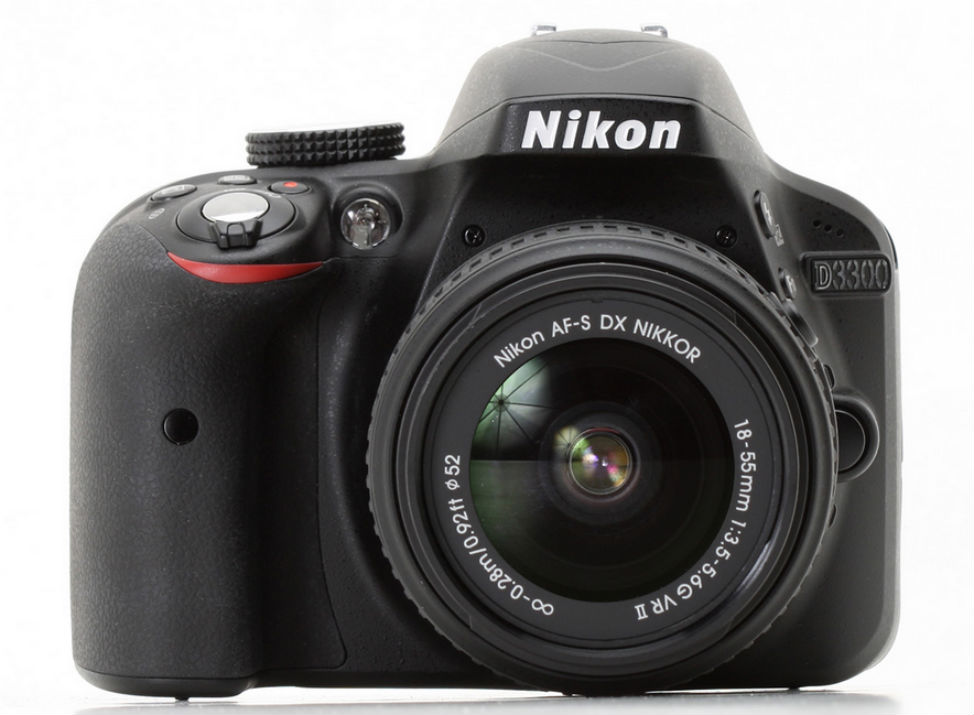
Nikon D3300 – Best Camera for Travel Photography – DSLR Under $600
2. Nikon D3300 w/ 18-55mm lens
SENSOR SIZE/MEGAPIXELS – DX-format CMOS sensor / 24.2 Megapixels
BATTERY LIFE – Approx 700 shots
ZOOM – Lens dependent, Standard includes 18-55mm range
PANORAMA SHOTS – Yes has an ‘Easy Panorama’ mode
LOW LIGHT – Great low-light sensitivity to an expandable ISO 25600
WEIGHT – .95 lbs / 15.17 oz
SIZE – 4.9 x 3.9 x 3.0″ in / 124.0 x 98.0 x 75.5 mm
WIFI – Yes (with Optional Transmitter)
COST – Around $500
COOL FEATURES – Continuous shooting to 5 fps, Very long battery life allows up to 700 shots, 24 megapixel sensor, 11-point autofocus system, Great image processor allows superior image quality and high sensitivity
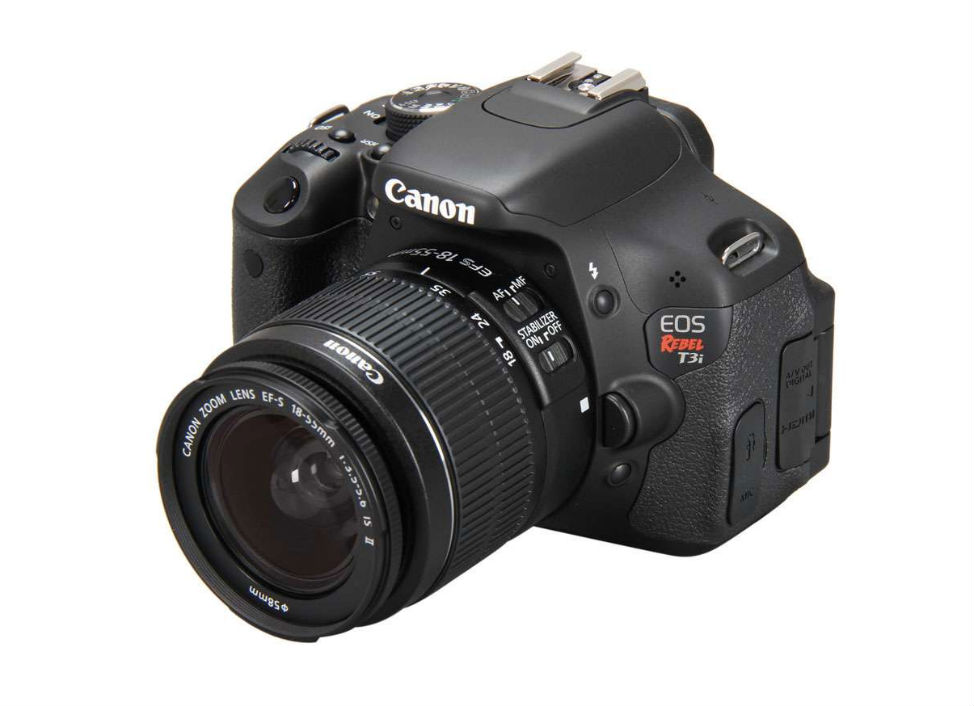
Canon T3i – Best Camera for Travel Photography – DSLR Under $600
3. Canon T3i w/ 18-55mm Lens
SENSOR SIZE/MEGAPIXELS – CMOS Image sensor, 18 Megapixels
BATTERY LIFE – Approx 440 shots (flash usage dependent)
ZOOM – Lens dependent, Standard includes 18-55mm range
PANORAMA SHOTS – No panorama mode but has ability to stitch shots together
LOW LIGHT – Has an ISO range of 100-6400 (expandable to 12800)
WEIGHT – 1.13 lbs / 18.2 oz
SIZE – 5.2 x 3.9 x 3.1 in./133.1 x 99.5 x 79.7mm
WIFI – No
COST – Around $570
COOL FEATURES – Variable angle tilt 3″ LCD, Wireless flash photography, Full HD 1080p Video Recording at 30 fps, Compatible with all Canon EF lenses and EF-S lenses, Scene Intelligent Auto Mode, 3.7 fps Continuous Shooting, Great battery life, high ISO range reduces need for a tripod or flash for low-light shots
Best Camera for Travel Photography:
Top 3 DSLR Camera – Under $1000
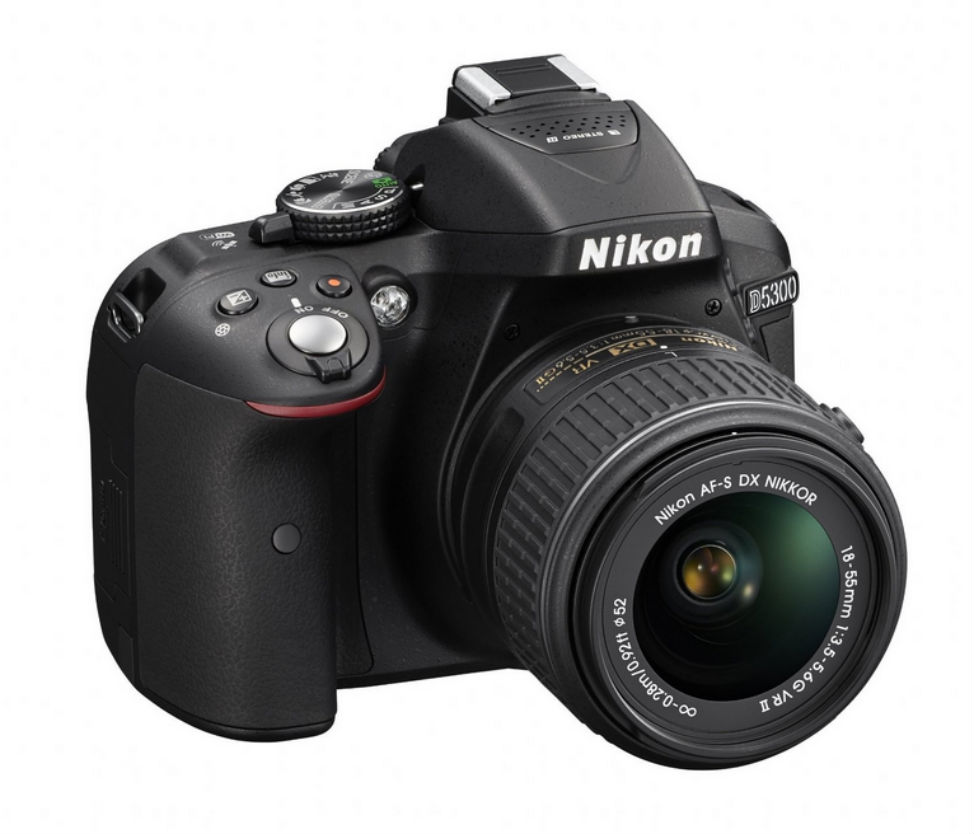
Nikon D5300 – Best Camera for Travel Photography – DSLR Under $1000
1. Nikon D5300 w/ 18-55mm lens
SENSOR SIZE/MEGAPIXELS – DX-Format CMOS Sensor, 24.2 Megapixels
BATTERY LIFE – Approx 600 Shots
ZOOM – Lens dependent, Standard includes 18-55mm range
PANORAMA SHOTS – Not Specified
LOW LIGHT – Good range from ISO100 – ISO12800, extends to 25600
WEIGHT – 1.06 lbs / 16.96 oz
SIZE – 3.86 x 2.99 x 4.92 in / 125 x 98 x 76mm
WIFI – Yes, Built in WiFi
COST – Around $750
COOL FEATURES – Large 3.2″ swiveling Vari-angle LCD, Small Compact body compared to others in its class, Has both Built-In WiFi and GPS connectivity, Continuous shooting ability at 5fps (great for action shots), 39-point high-density Autofocus system
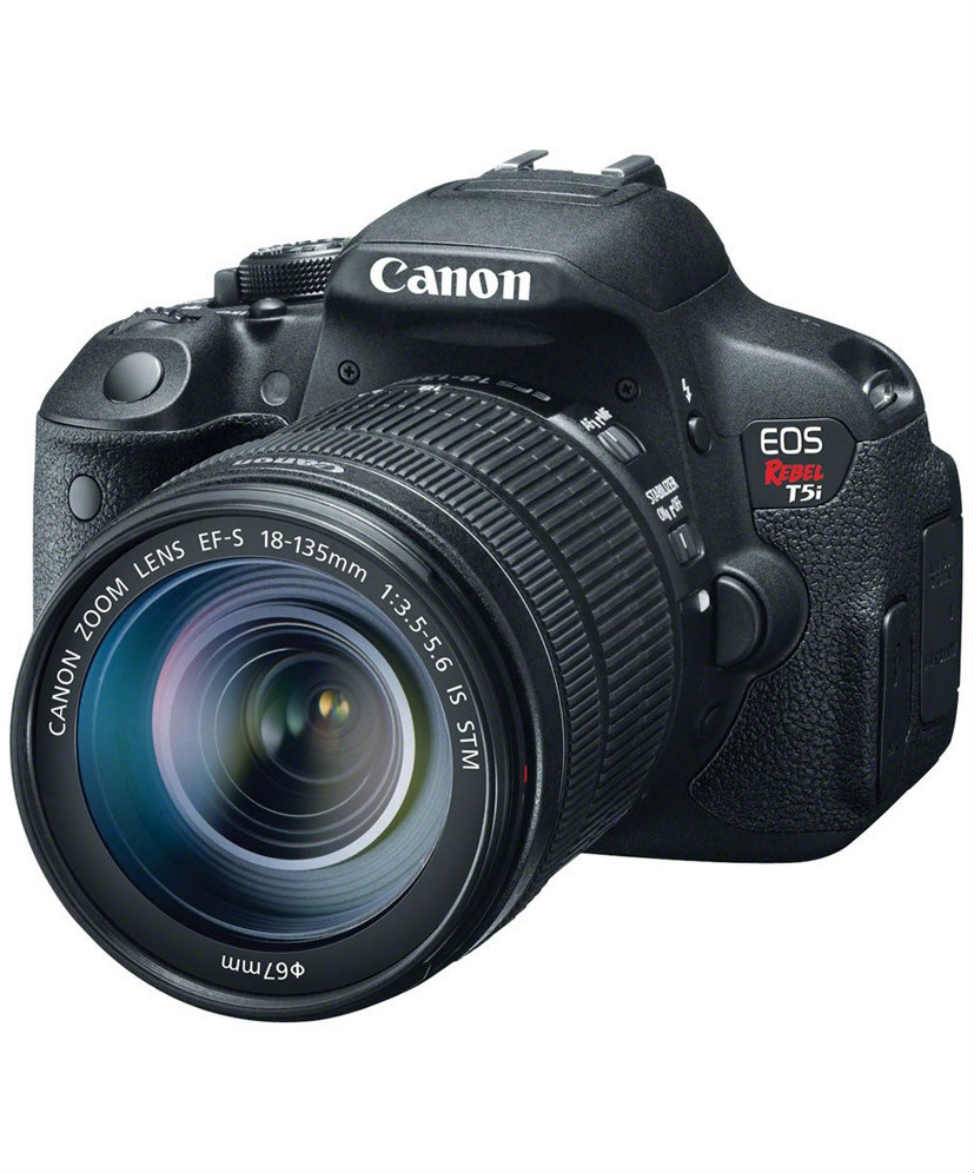
Canon T5i – Best Camera for Travel Photography – DSLR Under $1000
2. Canon T5i w/ 18-135mm lens
SENSOR SIZE/MEGAPIXELS – APS-C CMOS sensor, 18 Megapixels
BATTERY LIFE – Approx 440 Shots
ZOOM – Lens Dependent, Comes with EF-S 18-135mm range lens (f/3.5-5.6)
PANORAMA SHOTS – There is not a panorama mode but able to shoot and stitch images with software
LOW LIGHT – Excellent ability with ISO range of 100–12800 (expandable to 25600)
WEIGHT – 1.28 lbs / 20.5 oz
SIZE – 5.2 x 3.9 x 3.1 in. / 133.1 x 99.8 x 78.8mm
WIFI – Not Specified
COST – Around $900
COOL FEATURES – Continuous shooting up to 5fps, 3″ articulating touch panel LCD, Full HD 1080p Video Recording at 30 fps, 9-point Autofocus system, Has Touchscreen operation that includes ‘Touch Autofocus’, Scene Intelligent Auto Mode, Compatible with all EF and EF-S lenses, GPS Compatible
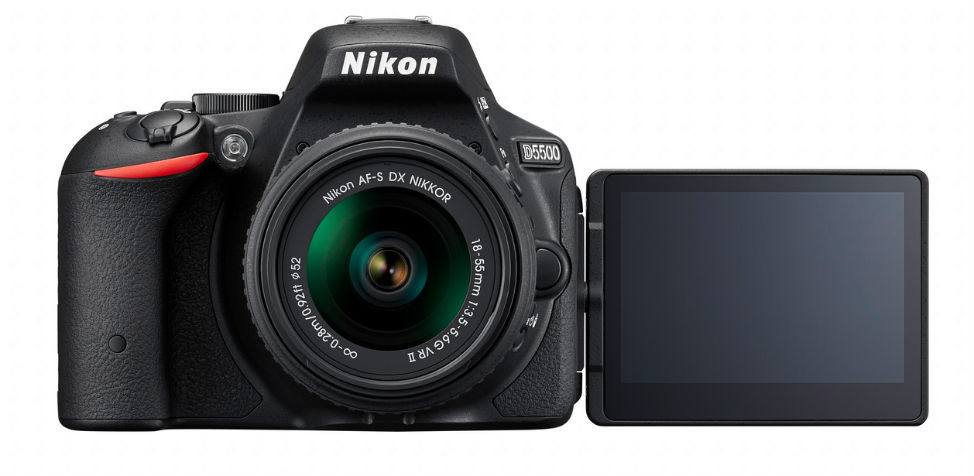
Nikon D5500 – Best Camera for Travel Photography – DSLR Under $1000
3. Nikon D5500 w/ 18-55 lens
SENSOR SIZE/MEGAPIXELS – 23.5mm x 15.6 mm / 24.2 Megapixels
BATTERY LIFE – Approx 820 Shots
ZOOM – Lens Dependent, Standard includes 18-55mm range
PANORAMA SHOTS – No built-in panorama mode but able to stitch shots in software
LOW LIGHT – Image processor handles great low light up to 25,600 ISO
WEIGHT – .93 lbs / 14.88 oz
SIZE – 3.82 x 2.76 x 4.88 in / 124 x 97 x 70mm
WIFI – Yes, Built-in WiFi
COST – Around $850
COOL FEATURES – Large 3.2″ Vari-Angle Touchscreen LCD (w/ 180° swivel design), Extremely long battery life, Very lightweight for its class, 39-point Autofocus system (helps acquire focus in array of lighting conditions), Built-In HDR capability, Excellent 1920 x 1080p HD video w/ frame rates ranging from 60, 30, 25, and 24 fps
Best Camera for Travel Photography:
Top 3 DSLR Camera – Under $1600
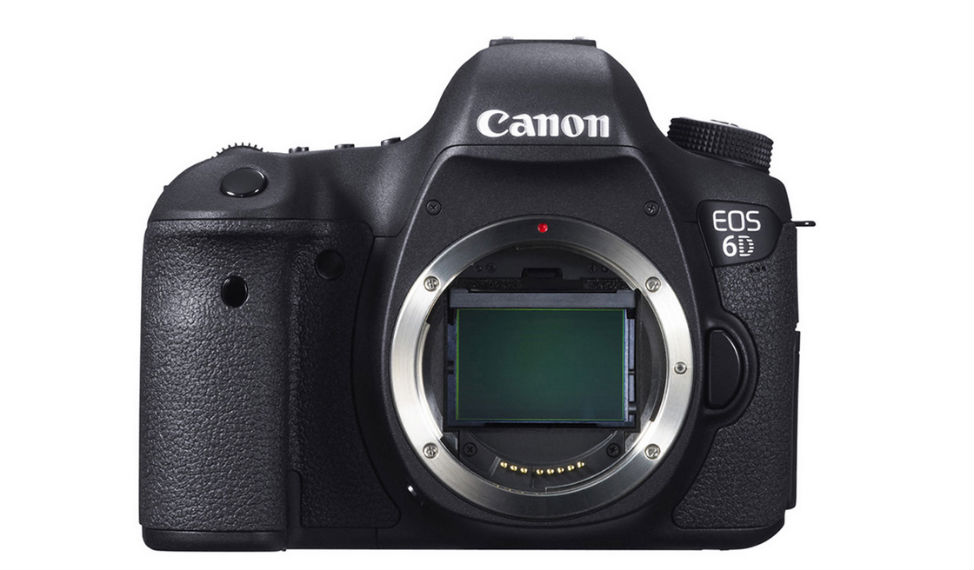
Canon EOS 6D – Best Camera for Travel Photography – DSLR Under $1600
1. Canon EOS 6D (body only)
SENSOR SIZE/MEGAPIXELS – Full frame CMOS sensor, 20.2 Megapixels
BATTERY LIFE – Approx 1090 Shots
ZOOM – Lens Dependent, Body only
PANORAMA SHOTS – No specific mode available but able to stitch photos with software
LOW LIGHT – Excellent low light ability with ISO 25600, Extended to ISO 102400
WEIGHT – 1.7 lbs / 27.2 oz
SIZE – 5.7 x 4.4 x 2.8″ in / 145 x 111 x 71 mm
WIFI – Built-In WiFi and GPS Connectivity
COST – Around $1400
COOL FEATURES – 11 Point Autofocus, Full HD recording at 1080/30p with full control over exposure and sound, Built-in WiFi and GPS, Full-Frame CMOS sensor for image quality sharpness, colors and detail, Has ‘Silent Shooting’ and ‘Scene Intelligent Auto’ modes, 4.5fps of continuous shooting to capture action shots, Low Light sensitivity rated best in class, DIGIC 5+ Image Processor delivers amazing processing speed and noise reduction, Very long battery life
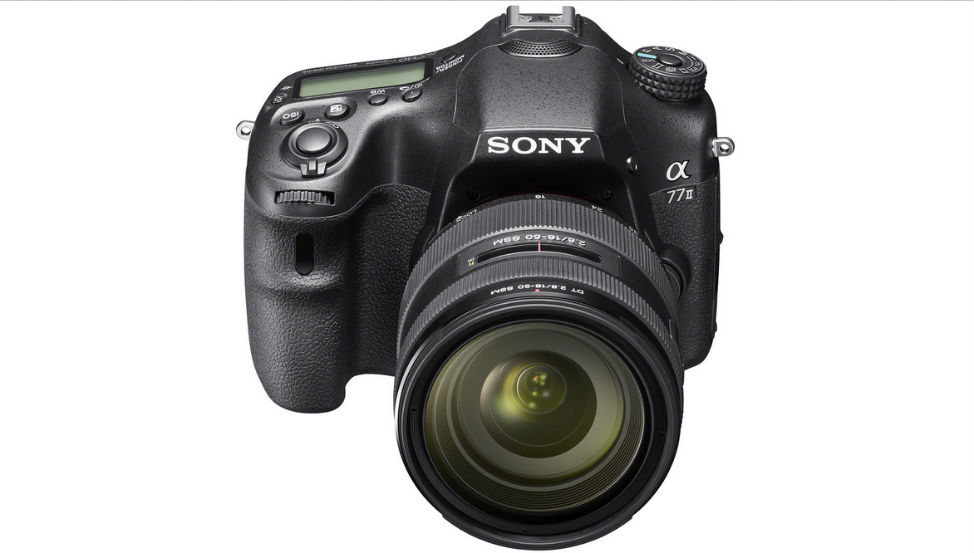
Sony Alpha A77II – Best Camera for Travel Photography – DSLR Under $1600
2. Sony Alpha A77II with 16-50mm F2.8 Lens
SENSOR SIZE/MEGAPIXELS – Large 23.5 X 15.6mm APS-C Sensor, 24.3 Megapixels
BATTERY LIFE – Approx 480 Shots
ZOOM – Lens Dependent, Includes 16-50mm range lens
PANORAMA SHOTS – Yes, has ‘Sweep Panorama’ mode
LOW LIGHT – Great low light quality and sensitivity to ISO 25600
WEIGHT – 1.43 lbs / 22.9 oz
SIZE – 5.6 x 4.1 x 3.2″ in / 142.6 x 104.2 x 80.9 mm
WIFI – Yes, Built-In WiFi and NFC
COST – Around $1600 (includes lens)
COOL FEATURES – Continuous Shooting up to 12fps (best in class), WiFi capable, Most Autofocus Points available in its class at 79 Point Phase Detection, WiFi and NFC allow easy camera to smartphone or tablet sharing, Smart Remote Control option available via smartphone, Full HD 1920×1080 resolution with 60p/60i or cinematic 24p, Weather resistant body, 3-Way Tilt and Swivel LDC screen, Built in Flash, Sweep Panorama mode, f/2.8 Lens included in this setup, Lightweight Body (for its class)
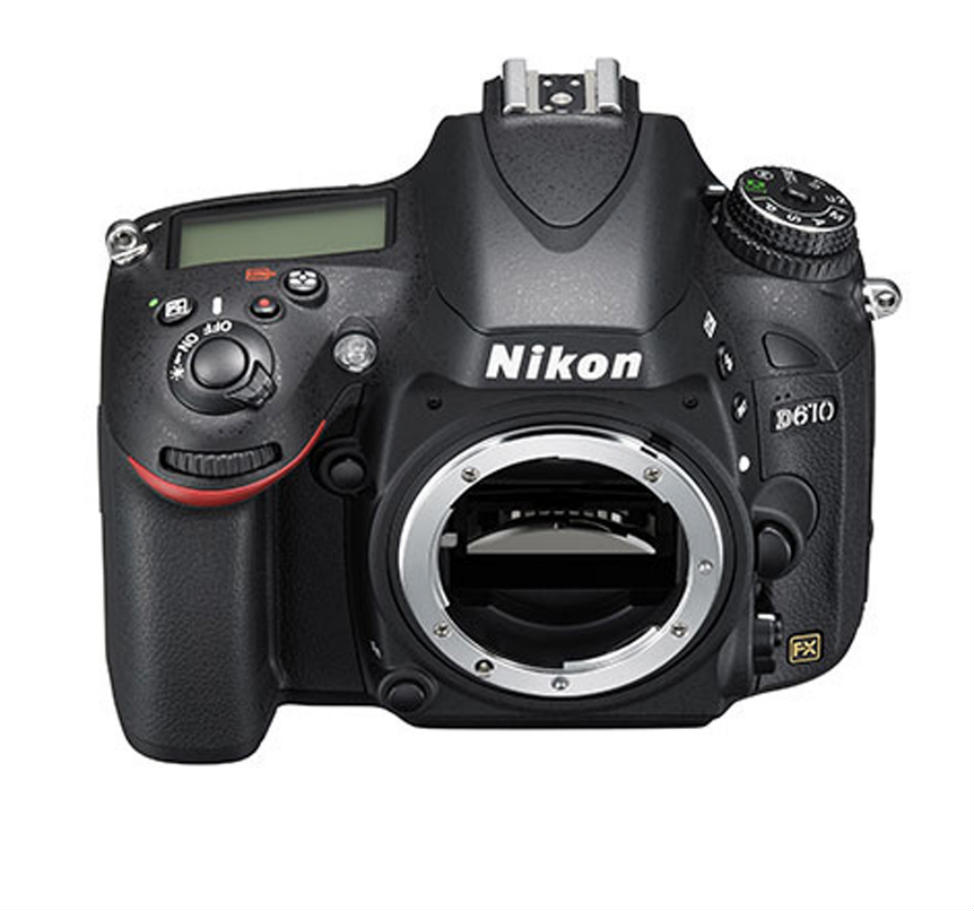
Nikon D610 – Best Camera for Travel Photography – DSLR Under $1600
3. Nikon D610 (body only)
SENSOR SIZE/MEGAPIXELS – Full Frame CMOS sensor, 24.3 Megapixels
BATTERY LIFE – Approx 900 Shots
ZOOM – Lens Dependent (body only)
PANORAMA SHOTS – No specific mode available but able to stitch photos with software
LOW LIGHT – Excellent Low Light sensitivity to ISO 6400, expandable to ISO 25600
WEIGHT – 1.67 lbs / 26.8 oz
SIZE – 5.6 x 4.4 x 3.2″ in / 141 x 113 x 82 mm
WIFI – Optional/Separate WiFi Mobile Adapter (plug-in)
COST – Around $1500
COOL FEATURES – Continuous Shooting up to 6fps, 39 Point Autofocus system, Built-in Flash, Full HD 1080p Movie recording with frame rates of 30p, 25p or 24p and 720p HD at 60p, 50p or 30p, WiFi connectivity, Great battery life, Compatible with all DX lenses, Intelligent Scene Recognition System, Built-In HDR, Weather Resistant camera body, Ergonomic design, Well rated low light/ISO performance
Best Camera for Travel Photography:
Pros & Cons of a Micro 4/3 Camera (Mirrorless)
For those not familiar with Micro 4/3 cameras, they are essentially a camera that allows very high picture quality in a smaller size both in the camera body as well as the lens. Because the micro 4/3 camera is mirrorless, unlike a DSLR, it allows the body to be smaller as well as the lenses.
A micro 4/3 camera can offer the traveler the best of both worlds when it comes to a compromise between a larger DSLR and a smaller compact camera since a Micro 4/3 is able to take professional quality photos while being around half the size and weight of a typical DSLR. The popularity of these cameras has been catching on lately however, they are still relatively new to the industry and as a result, they can be higher priced than both a compact and a DSLR depending on models you are choosing from.
Pros of a Micro 4/3 Camera:
There is almost no doubt that no matter which Micro 4/3 camera you were to purchase, the image quality will be remarkably better than that of a compact/point and shoot camera. Typically, Micro 4/3 (mirrorless) cameras are more in line with image quality of that of DSLR cameras thought the digital sensors are full frame (larger).
As for weight, you can expect a Micro 4/3 camera to typically be half to one-third the weight of a DSLR camera. Another huge advantage when considering that you can get comparable image quality with substantially less weight which can be crucial when traveling.
As for the size, they are also about half than that of larger, bulkier DSLR cameras. Again, this is of crucial concern when thinking about the camera you bring along when traveling.
And just as the body of a Micro 4/3 is both smaller and lighter weight, the lenses that go with the camera will also be smaller in size and weight. This is great because for those serious photographers out there that want interchangeable lenses to have more variety, now you won’t be weighed down and have a lot more room in your pack.
Overall, a Micro 4/3 Camera setup can mean being able to take professional looking photographs and being able to have your camera plus 2-3 lenses in a bag that would be half the size and weight when compared to a DSLR camera setup. For the avid traveler, this can all be a huge advantage since none of us every have that much room to spare in our backpack and could very well shave anywhere from 1-4 lbs worth of equipment!
Cons of a Micro 4/3 Camera:
One of the biggest complaints you’ll hear from Micro 4/3 users is the lack of lenses that are available. This is mainly due to the fact that the popularity of Micro 4/3 is still relatively new so there aren’t nearly as many lenses available as you’d find with a Canon or Nikon DSLR setup. Therefore, you will have often have to buy new lenses instead of used ones which can make the Micro 4/3 even more expensive than if going with a mid-range DSLR setup (body plus 2-3 lenses).
Another disadvantage is the sensor size. Because the camera body is inherently smaller than its big brother DSLR, Micro 4/3 cameras have a smaller sensor. While image quality is still fantastic and megapixels can be comparable, the overall size/resolution of photos can be at a disadvantage when compared to full frame sensor DSLR cameras. This all continues to improve however as the technology advances.
Depending on what you personally prefer, Micro 4/3 have electronic viewfinders instead of optical viewfinders like you’ll find in DSLR cameras. While this can surely be seen as a disadvantage, especially to those that are used to using a DSLR, some photographers actually prefer the electronic view finder (EVF) because certain Micro 4/3 cameras actually offer instant response by converting what your image will shoot (from optical to electronic).
So with the pros and cons listed out for Micro 4/3 Cameras, lets look at some options out there for the top 3 cameras in each price point…
Best Camera for Travel Photography:
Top 3 Micro 4/3 Camera – Under $500
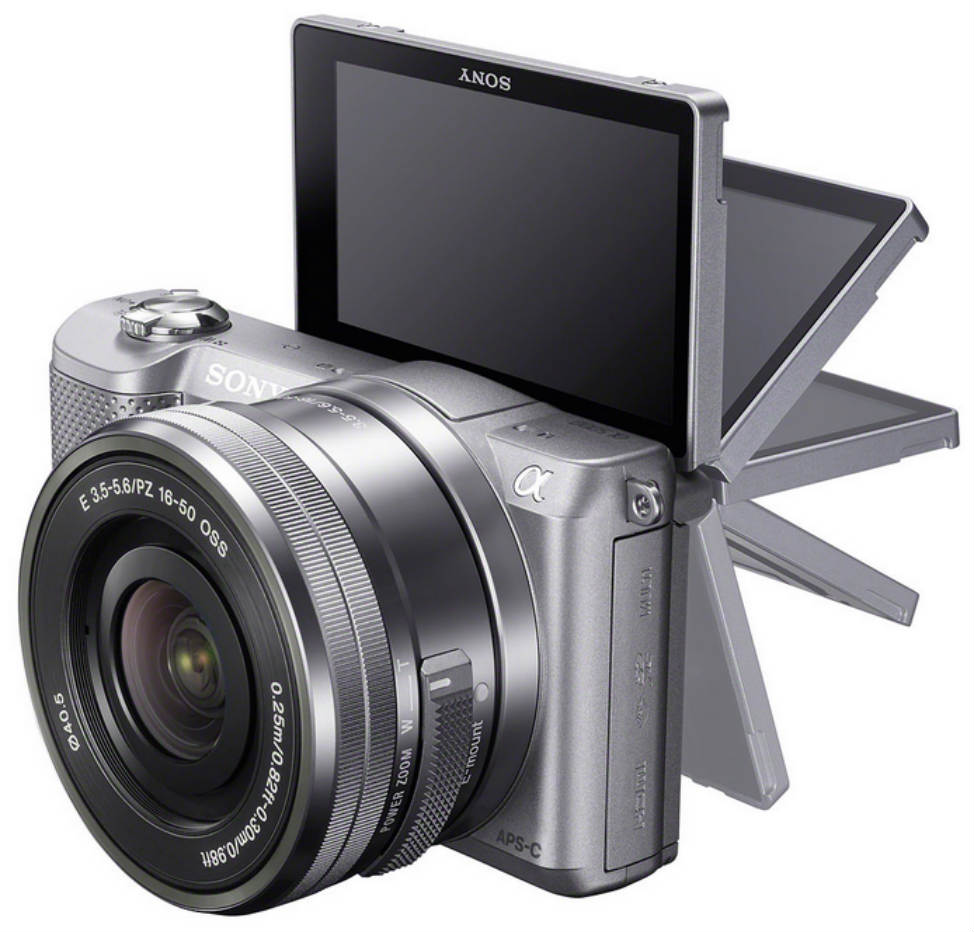
Sony Alpha a5000 – Best Camera for Travel Photography – Micro 4/3 Under $500
1. Sony Alpha a5000 w/ 16-50mm Lens
SENSOR SIZE/MEGAPIXELS – Exmor APS-C sensor, 20.1 Megapixels
BATTERY LIFE – Approx 420 Shots
ZOOM – Lens dependent, Setup includes 16-50mm range lens
PANORAMA SHOTS – Has ‘Sweep Panorama’ mode
LOW LIGHT – Low light sensitivity to ISO 16000
WEIGHT – .59 lbs / 9.44 oz
SIZE – 2.48 x 1.42 x 4.33″ in /
WIFI – Built-In WiFi connectivity
COST – Around $450
COOL FEATURES – 3″ 180° tilting LCD monitor, WiFi and NFC connectivity allow easy sharing b/t camera and mobile devices, Includes 16-50mm f/3.5-5.6 lens in this setup, Built-In pop-up flash, Face Detection/Smile Shutter helps shutter release when a smile is detected in frame, Full HD 1080 video with both 60i and 24p frame rates, 25 point Autofocus system, Continuous shooting at 3.5 fps, Good battery life for its class

Sony NEX-5TL – Best Camera for Travel Photography – Micro 4/3 Under $500
2. Sony NEX-5TL w/ 16-50mm Lens
SENSOR SIZE/MEGAPIXELS – APS-C sensor, 16.1 Megapixels
BATTERY LIFE – Approx 330 Shots
ZOOM – Lens dependent, Setup includes 16-50mm range lens
PANORAMA SHOTS – Has ‘Sweep Panorama’ mode for horizontal/vertical shots
LOW LIGHT – Great low light sensitivity up to ISO 25600
WEIGHT – .61 lbs / 9.76 oz
SIZE – 2.31 x 1.53 x 4.36″ in /
WIFI – Built-In WiFi connectivity
COST – Around $350
COOL FEATURES – 3″ 180° tiltable LCD touchscreen, Up to 10 FPS Continuous Shooting, Built-In WiFi and NFC, Fast Hybrid Autofocus capability (phase and contrast detection), Full HD Movies in 1920×1080 resolution with 60p, 60i or cinematic 24p, Auto HDR mode, Sweep Panorama capability
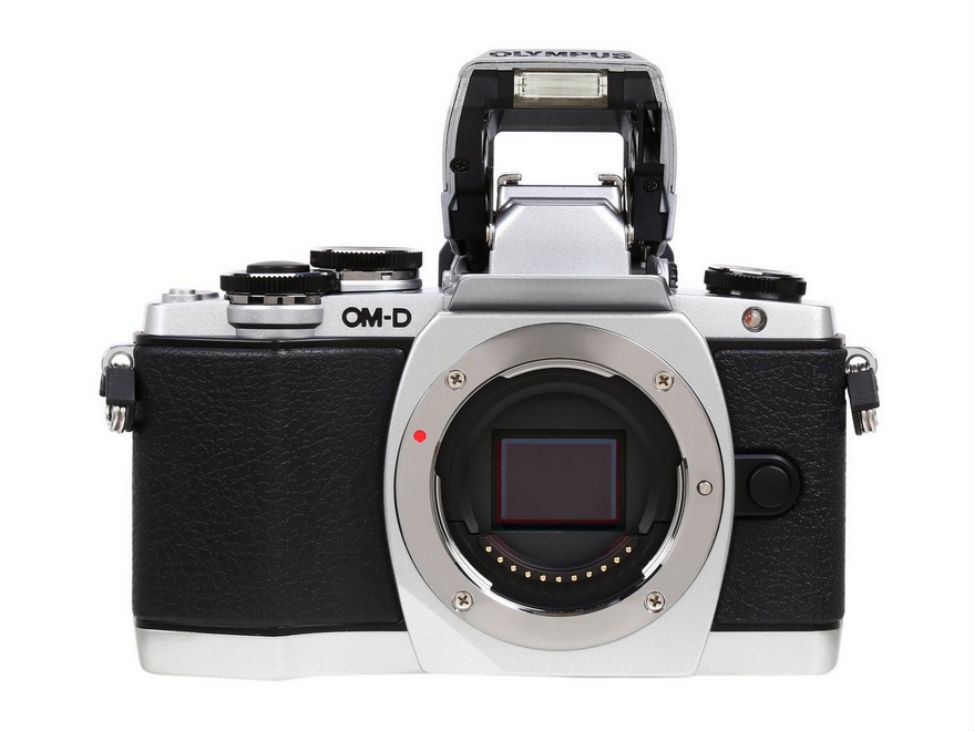
Olympus OM-D E-M10 – Best Camera for Travel Photography – Micro 4/3 Under $500
3. Olympus OM-D E-M10 (Body Only)
SENSOR SIZE/MEGAPIXELS – MOS Sensor, 16.1 Megapixels
BATTERY LIFE – Approx 320 Shots
ZOOM – Lens Dependent
PANORAMA SHOTS – No specific mode but can stitch photos in software
LOW LIGHT – Good low light with ISO 200-25600
WEIGHT – .87 lbs / 13.92 oz
SIZE – 3.24 x 1.81 x 4.69″ in / 119.1 x 82.3 x 45.9 mm
WIFI – Built-In WiFi connectivity
COST – Around $500 (body only)
COOL FEATURES – Excellent Built-in 3 Axis image stabilization, WiFi and remote shooting ability, Very fast Autofocus system, Built-in Flash, Continuous shooting at 8 fps, 17 Micro Four Third lenses to choose from, Large Electronic View Finder (EVF), Tiltable touchscreen LCD monitor, 81 Point Autofocus grid, 2 HDR modes, Time-Lapse movie feature, Art filters
Best Camera for Travel Photography:
Top 3 Micro 4/3 Camera – Under $800

Sony Alpha a6000 – Best Camera for Travel Photography – Micro 4/3 Under $800
1. Sony A6000 w/ 16-50mm Lens
SENSOR SIZE/MEGAPIXELS – APS-C CMOS sensor, 24.7 Megapixels
BATTERY LIFE – Approx 420 Shots
ZOOM – Lens dependent, Setup includes 16-50mm range lens
PANORAMA SHOTS – Has ‘Sweep Panorama’ mode
LOW LIGHT – Great low-light quality and sensitivity to ISO 25600
WEIGHT – .76 lbs / 12.13 oz
SIZE – 4.7 x 2.6 x 1.8″ in / 120.0 x 67.0 x 45.0 mm
WIFI – Built-In WiFi connectivity
COST – Around $700
COOL FEATURES – Built-in Wi-Fi and NFC, Continuous shooting up to 11 fps, 3″ Widescreen Tilting LCD (upward 90° or downward 45°), Hand-Held Twilight mode improve sharpness in low light conditions, Auto HDR capability, Hybrid 79-point Autofocus with phase-detection and contrast detection points, compatible with all Sony E-Mount lenses, High resolution video capability with HD 1080i/p video at both 60 and 24 fps frame rates, Rated best in class sensor
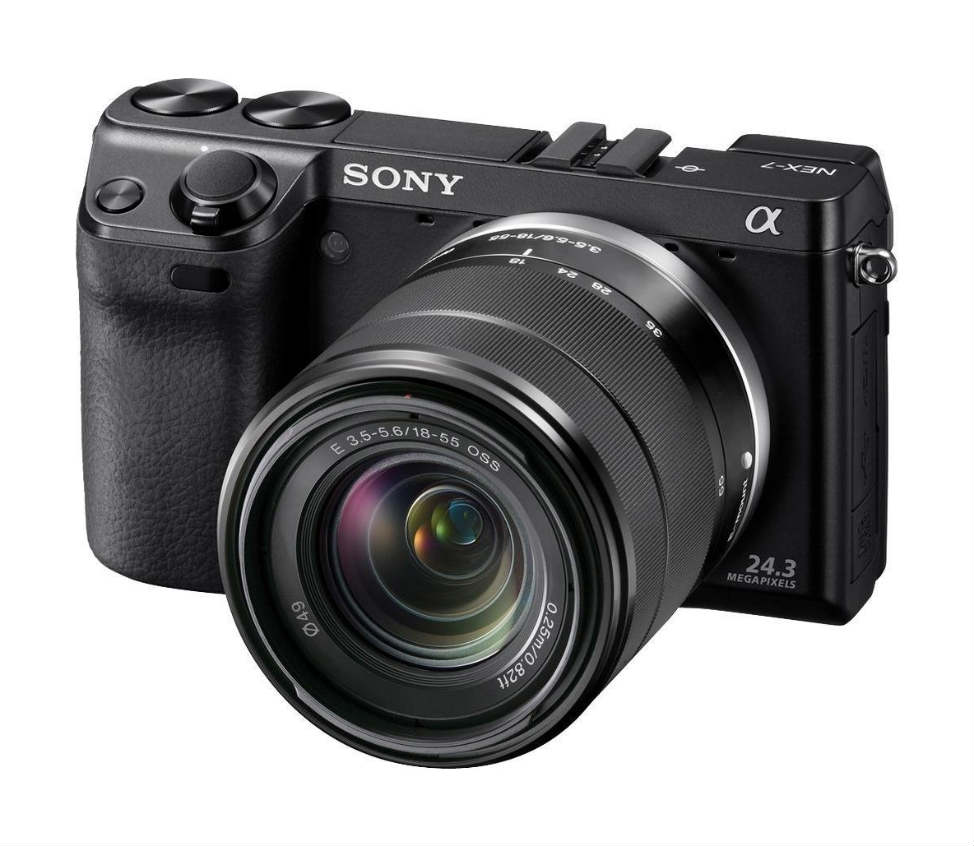
Sony NEX-7 – Best Camera for Travel Photography – Micro 4/3 Under $800
2. Sony NEX-7 with 18-55mm Lens
SENSOR SIZE/MEGAPIXELS – APS-C Sensor, 24.3 Megapixels
BATTERY LIFE – Approx 430 Shots
ZOOM – Lens dependent, Setup includes 16-50mm range lens
PANORAMA SHOTS – Yes, ‘Sweep Panorama’ mode
LOW LIGHT – High ISO performance to 16000
WEIGHT – .64 lbs / 10.24 oz
SIZE – 2.63 x 4.72 x 1.69″ in /
WIFI – Not Specified
COST – Around $670
COOL FEATURES -Up to 10 fps Continuous Shooting, Auto HDR and Sweep Panorama modes, Full HD video at 1920 x 1080 resolution and 60p, 60i and 24p frame rates, Built-In flash, Intelligent Autofocus, Compatible with all Sony E-Mount interchangeable lenses, Tiltable 3″ LCD Monitor (Tilts down 45° and up 80°), Full Manual control for HD movies, Same sized sensor in most DSLRs (1.6x larger than 4/3 model sensors), Small enough to fit in your pocket
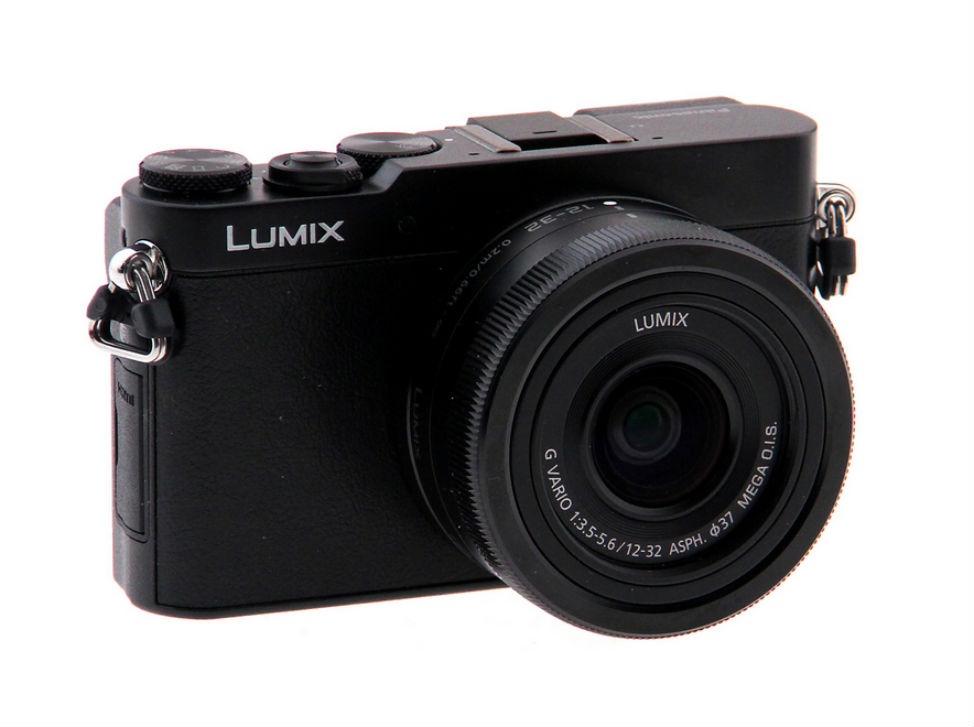
Panasonic Lumix DMC-GM5 – Best Camera for Travel Photography – Micro 4/3 Under $800
3. Panasonic Lumix DMC – GM5 with 12-32mm lens
SENSOR SIZE/MEGAPIXELS – Digital Live MOS sensor, 16 Megapixels
BATTERY LIFE – Approx 220 Shots
ZOOM – Lens Dependent, Setup includes lens w/ 12-32mm range
PANORAMA SHOTS – Yes, panorama available
LOW LIGHT – High performance low light w/ ISO 200 – 25600
WEIGHT – .4 lbs / 6.4 oz
SIZE – 2.34 x 3.88 x 1.42″ in / 99 x 60 x 36 mm
WIFI – Yes, Built In
COST – Around $715
COOL FEATURES – 5.8 fps continuous shooting capability, Very compact, lightweight body for its class (best in class), Full HD 1080p Video at 60 fps, Built in Wireless capability for remote control ability from mobile devices, Face/Eye Detection and Low Light Autofocus mode, Silent mode shooting option available
Best Camera for Travel Photography:
Top 3 Micro 4/3 Camera – Under $1400
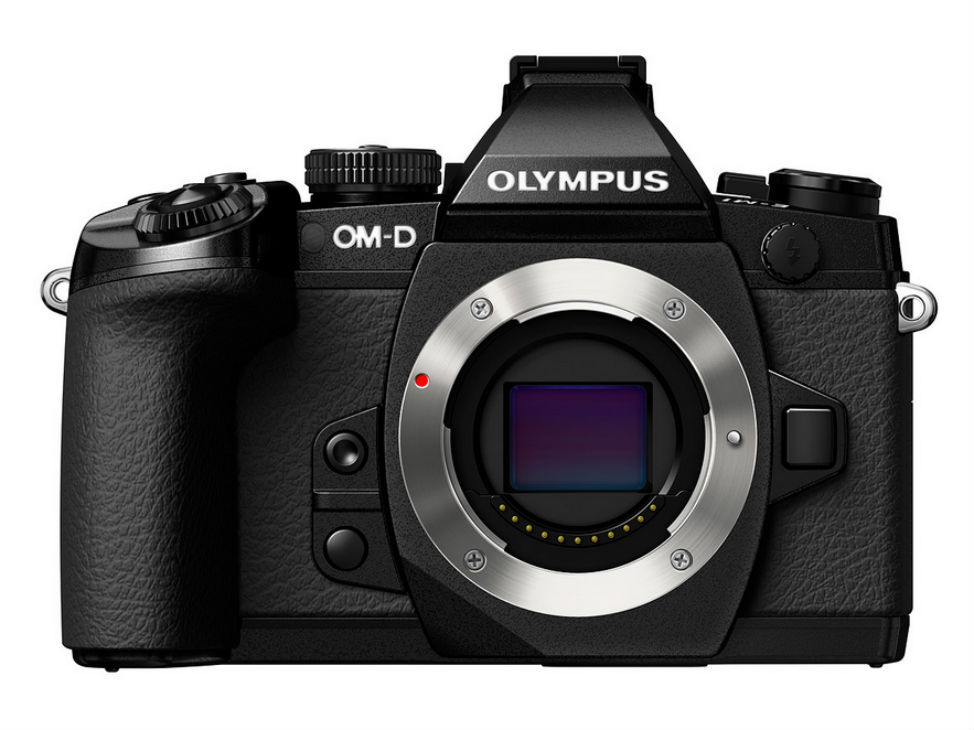
Olympus OM-D EM-1 – Best Camera for Travel Photography – Micro 4/3 Under $1400
1. Olympus OM-D EM-1 (body only)
SENSOR SIZE/MEGAPIXELS – CMOS Four Thirds sensor with 5-axis sensor shift image stabilization, 16.3 Megapixels
BATTERY LIFE – Approx 350 Shots
ZOOM – Lens Dependent (not included in this setup)
PANORAMA SHOTS – Panorama mode avail but need to stitch photos w/ software
LOW LIGHT – Excellent low-light, high sensitivity range from ISO 100-25600
WEIGHT – 1.1 lbs / 17.6 oz
SIZE – 3.68 x 2.48 x 5.13″ in / 130.4 x 93.5 x 63.1 mm
WIFI – Yes, Built- In WiFi connectivity
COST – Around $1180 (body only)
COOL FEATURES – Dustproof/Splashproof/Freezeproof Body (very durable for outdoor/travel), 5-axis image stabilization compensates for camera shake and improves image quality, 3″ Tilting Touchscreen LCD monitor (can tilt 80° upward and 50° downward), 10 fps Continuous Shooting and 1/8000 sec. Top Shutter Speed, 57 compatible lenses available, Built-In Wireless connectivity, Rated Best Micro four thirds in its class, AF illuminator helps focus in low-light conditions, 12 Art filters, Face and Eye Detection
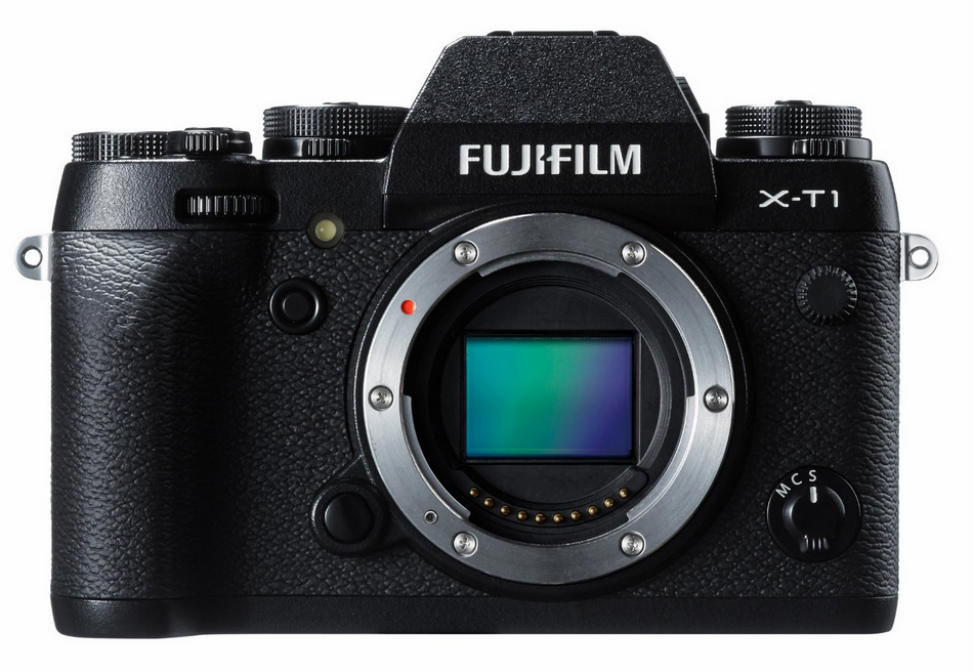
Fuji X-T1 – Best Camera for Travel Photography – Micro 4/3 Under $1400
2. Fuji X-T1 (body only)
SENSOR SIZE/MEGAPIXELS – APS-C X-Trans II CMOS sensor, 16.3 Megapixels
BATTERY LIFE – Approx 350 Shots
ZOOM – Lens Dependent, Not included in this setup
PANORAMA SHOTS – Has a ‘Motion Panorama’ mode, allows camera to be shot both horizontally and vertically
LOW LIGHT – Amazing low light sensitivity range from ISO 100-51200
WEIGHT – .97 lbs / 15.52 oz
SIZE – 3.54 x 1.85 x 5.08 in / 129 x 89.8 x 46.7mm
WIFI – Yes, Built in WiFi connectivity
COST – Around $1300 (body only)
COOL FEATURES – Water, dust and freeze proof with weather resistant lenses available (very useful for outdoor/travel), 8 fps continuous shooting, 3″ tilting LCD screen, Full HD Movie (1920×1080) mode offers 60,30, 25 & 24 fps, Easily and instantly transfer photos from your camera to your PC and Smartphone with the ‘Camera Remote’ feature, Intelligent Hybrid Autofocus system is best in its class, Film Simulation modes and advanced filters add to photographic creativity, Motion panorama allows you to capture 360° views
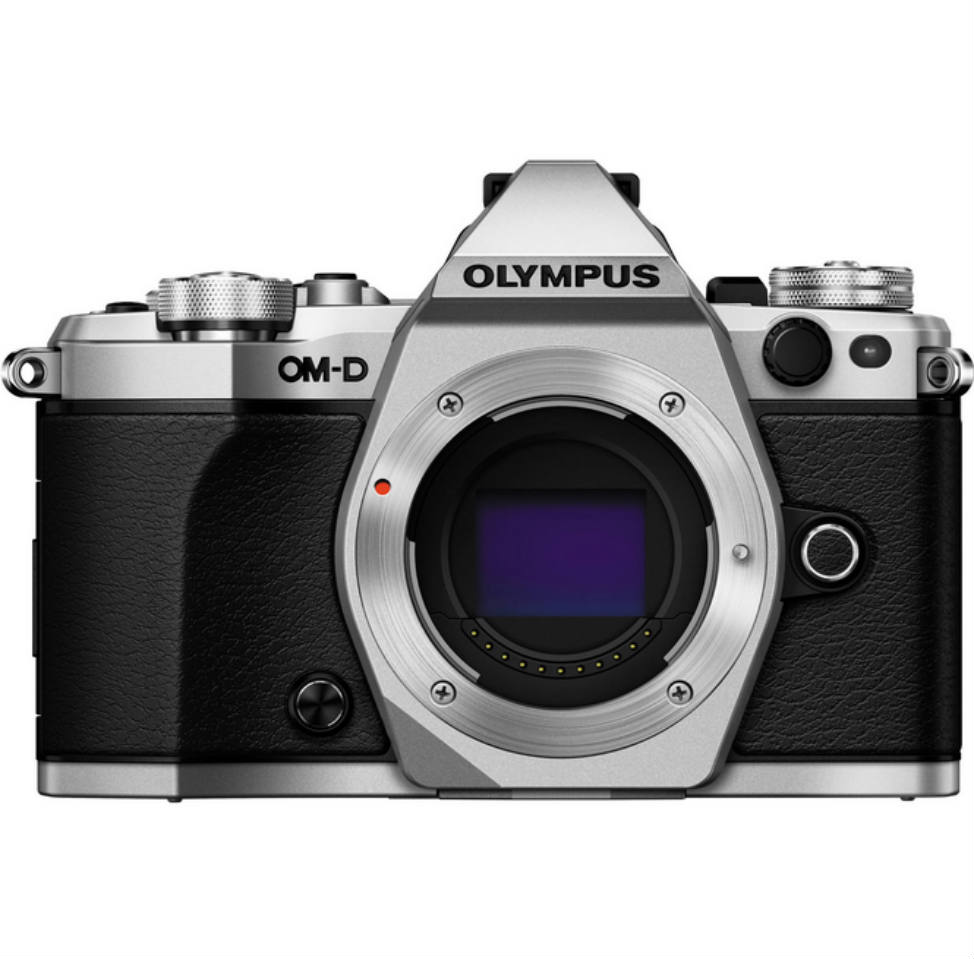
Olympus OM-D EM-5 Mark II – Best Camera for Travel Photography – Micro 4/3 Under $1400
3. Olympus OM-D EM-5 Mark II (body only)
SENSOR SIZE/MEGAPIXELS – Live MOS Sensor, 16 Megapixels
BATTERY LIFE – Approx 310 Shots
ZOOM – Lens Dependent, Not included in this setup
PANORAMA SHOTS – Not built-in, only able to stitch photos in software
LOW LIGHT – Exceptional low light ability with max ISO of 25,600
WEIGHT – 1.03 lbs / 16.48 oz
SIZE – 123.7mm × 85mm × 44.5mm
WIFI – Yes, Build In WiFi connectivity
COST – Around $1100 (body only)
COOL FEATURES -Sealed Body is splash proof, dust proof and freeze proof for all-weather protection, Axis Image stabilization (greatly reduces blur from camera shake), Built In WiFi, Super fast Autofocus capability, 3″ touchscreen LCD flips out to side and can rotate 270, Multitude of Pro Lenses available, Intuitive electronic viewfinder switches automatically between touchscreen and EVF via an eye sensor, 10 fps continuous/burst shooting, Full HD video capability in 1080: 60p, 30p, 25p, and 24p with focus peaking
STILL CAN’T DECIDE WHICH CAMERA IS BEST FOR YOUR TRAVELS?
If you want to try to get the best of both worlds, consider carrying along a point and shoot camera along with your larger, more professional camera. If you can afford to do so (both in cost and in the room it takes up in your bag), you’ll never have to worry about not being able to capture a shot. Most people don’t want to head out at night with their larger, more expensive camera so having a small one to fit in your pocket will allow you to take this with you at all times. It is also great to be able to quickly grab and take a shot when needed. With a quick point and shoot, you’ll save yourself many seconds which can make all the difference in grabbing a shot or missing something.
And as always, if you have questions and/or comments please post them below! Choosing which camera to buy is a big decision before go. A little extra guidance is always helpful right? Just leave your questions/comments and I promise to get to all of them!






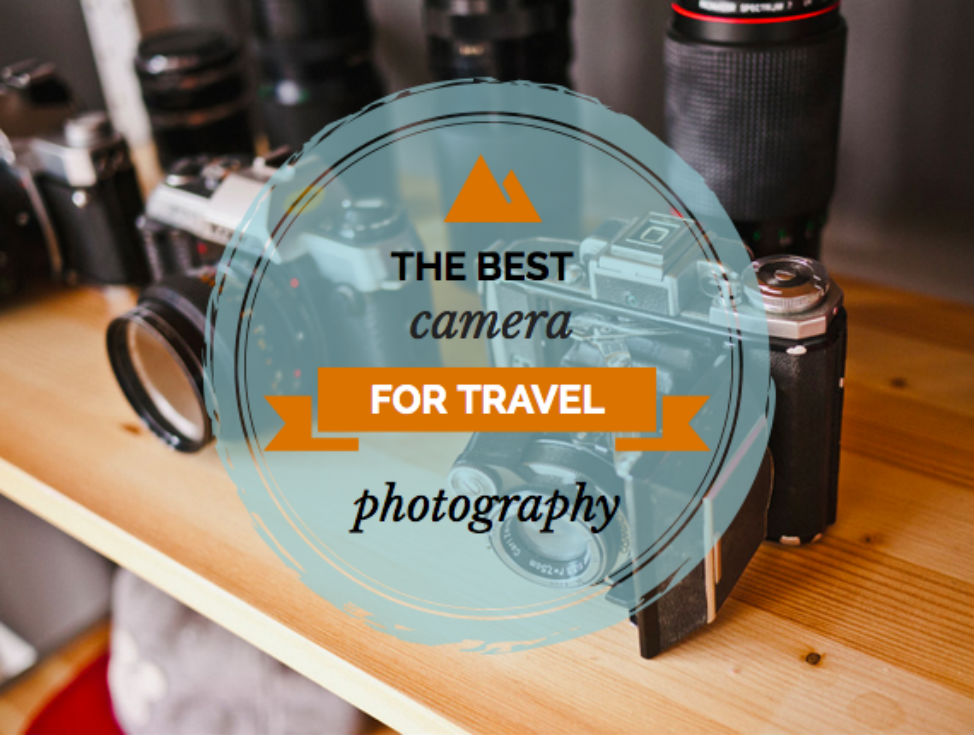
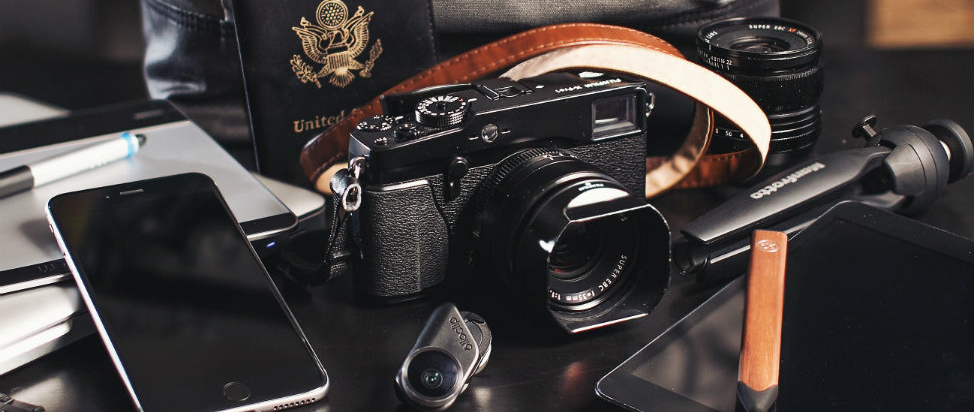
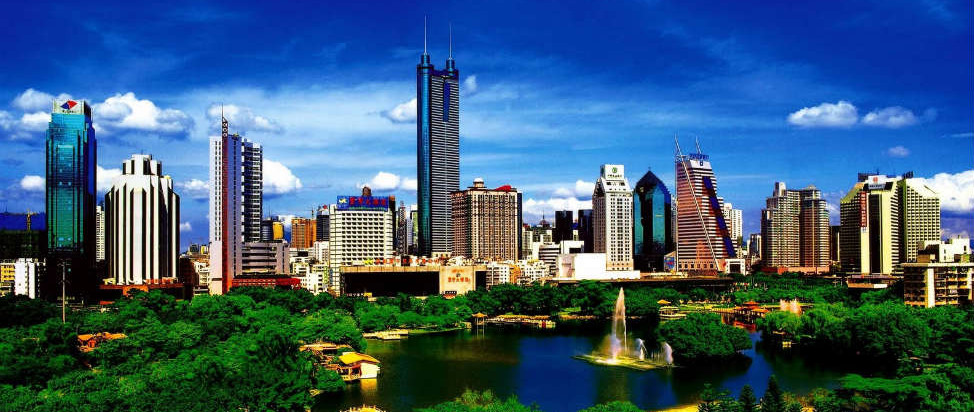

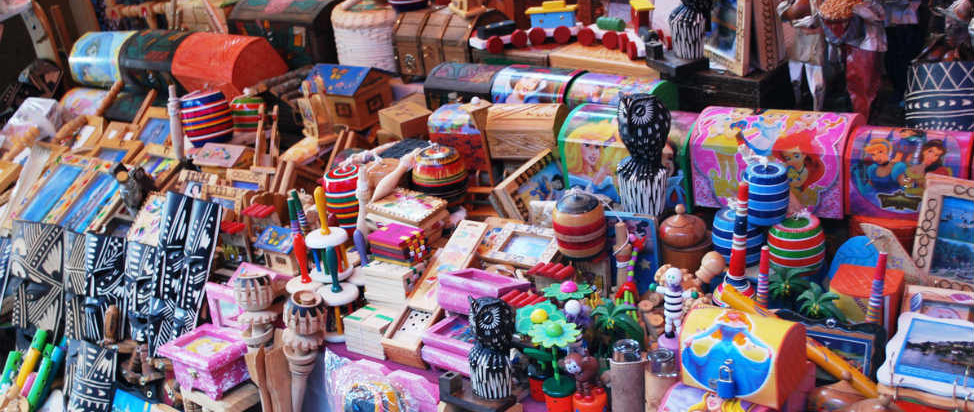
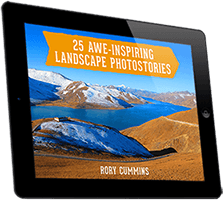
8 Comments... Join the conversation below
Hi Rory! I’ve read your blog and still can’t decided what to buy. Can you maybe give me 3 options as to what kind of camera I should buy?
Budget will be between 500-700 $.
I like taking pictures but I am not good at it. I tried to learn the basic of photography but without a decent camera it is very hard to learn. Now, I decided to finally buy one for me. I don’t travel much but this coming vacation I am planning to and I wanted to bring a camera with me but I don’t know what kind of camera I should bring. 😀
I am very confusing, I know. If you can just help me decided?
Mai recently posted…2015
Hi Mai, thanks for the comment… Before I go any further, let me first ask you… do you have a preference towards a small camera like a point and shoot that can fit in your pocket and where weight is a big concern? Or would that not matter and instead you just want to find one that is easy to use and takes great pictures?
Hi Rori,
I recently bought a full frame camera from my sister. I realized it’s a heavy camera for traveling; the camera is for my children’s portraits. My family and I are planning to have a vacation and I am thinking of investing on Olympus E M10. I read on the reviews, someone compared the camera to the Nikon 1 system and Fuji x100. Not only I want good quality of the picture, but I want good action shot. I went to the Olympus website, and I want to know what happen to their lenses. I remember they had small lenses.
I still want to know which good DSLR camera that is pocket size, focus on action, great low lighting, zooming, and good video quality.
Thanks.
Hi Kathleen! Thanks for your comment… It sounds like you are wanting something that is great for overall picture quality and portraits but also something that is versatile on the go when traveling.
With a DSLR, it will be a stretch on finding one that is truly ‘pocket size’ mainly for the reason that you have the body of the camera plus the lenses to go with it. This can also be true for a micro 4/3 (mirrorless) camera. They’ll be much smaller and some may be small enough to fit in your pocket (like a Sony Alpha a5000) however most of these will also be too large to fit in a pocket with a lens attached. That being said, it sounds like you are still wanting something with higher photo quality and adaptability than a point and shoot. For low lighting and zoom, you can go with lenses that are specific to that so any DSLR or Micro 4/3 setup can get you there with the right lenses.
And for travel, I’m a fan of the Micro 4/3 cameras because the take up much less space and depending on the camera, can also be less weight than a DSLR. The Olympus E-M10 is a great camera for what you’re needing but with most Micro 4/3 cameras, there will be less lenses to choose from. Well, better said, there are less ‘after-market’ lenses for them though you can usually find the brand specific lens you need within the Olympus family. I think the biggest question you’ll need to ask yourself though is if a true pocket size camera is what you want? You could always keep your sisters DSLR and get the lens you want and then just buy a small, high quality point and shoot camera to use while traveling. I do this often where I’ll take along two cameras with me to places. The point and shoot will come with me at night (in my pocket) while my Micro 4/3 is my go to for the rest of my trip and while back home, I will at times use my DSLR. I hope that helps!
Hi Rory,
I looked up again the prices for the camera, it is pricy for me. I looked up for the older Olympus Micro 4/3 cameras. The prices are really good. From Olympus Pen E-P1 to Pen E-P3, and Olympus Pen E-PL1 to Pen PL3, and Olympus Pen E-PL5. Do you have any knowledge of any of these cameras? I am going to wait on the OM-D series. My trip doesn’t start til’ late October.
Thanks
Hi Kathleen,
Olympus does make great cameras and I’m a personal fan of them as I own an Olympus OM-D EM-1. However, the PEN cameras are rated well and do feature a lot of the great technology already within the OM-D series but in a camera that is more compact and more affordable. But the fact that it has interchangeable lenses is definitely a plus. Luckily, as more and more lenses hit the market every year, cost has come down and there are more resale lenses available too. One of the best ways to decide can also be to visit your local professional camera shop and see if they have some of the ones you’re interested in on display along with the lenses. Sometimes this can be even more beneficial as you can get a feel for how the camera holds and it’s overall design. Does that make sense?
I am looking for a light weight camera (as light as possible) that is capable of producing: high resolution day and night photographs with the additional ability to take panoramic photographs. I would also like to purchase a lens (or inbuilt feature) that can take high quality photographs of distant scenes.
I also live in a rural location (with no dedicated camera shop) so I would need to do prior research before I hit the “big smoke” to potential purchase the camera of my choice.
Hi Sandra, thanks for the comment and the question…. It sounds like a good point and shoot camera could work for you but since you want a good telephoto lens for those long range shots, a point and shoot may not be the best idea. What is your budget? If you don’t want to buy a larger DSLR, especially for something light weight, I’d highly recommend a micro 4/3 camera (mirrorless) mainly b/c you can get the lends you need but you can get very high res photos with low light capability but also something that is small and generally lightweight. That said, if you still want to stay under the $500 range, I’d recommend going with a point and shoot and just trying to find one that has the best optical zoom available to achieve the distant shots you’re looking to create. I own a Powershot S95 by Canon and its great for both day and night though the model I had from a few years ago didn’t allow panoramic shots though the newer ones probably do and may have enough zoom that works for you…
Hope that helps!